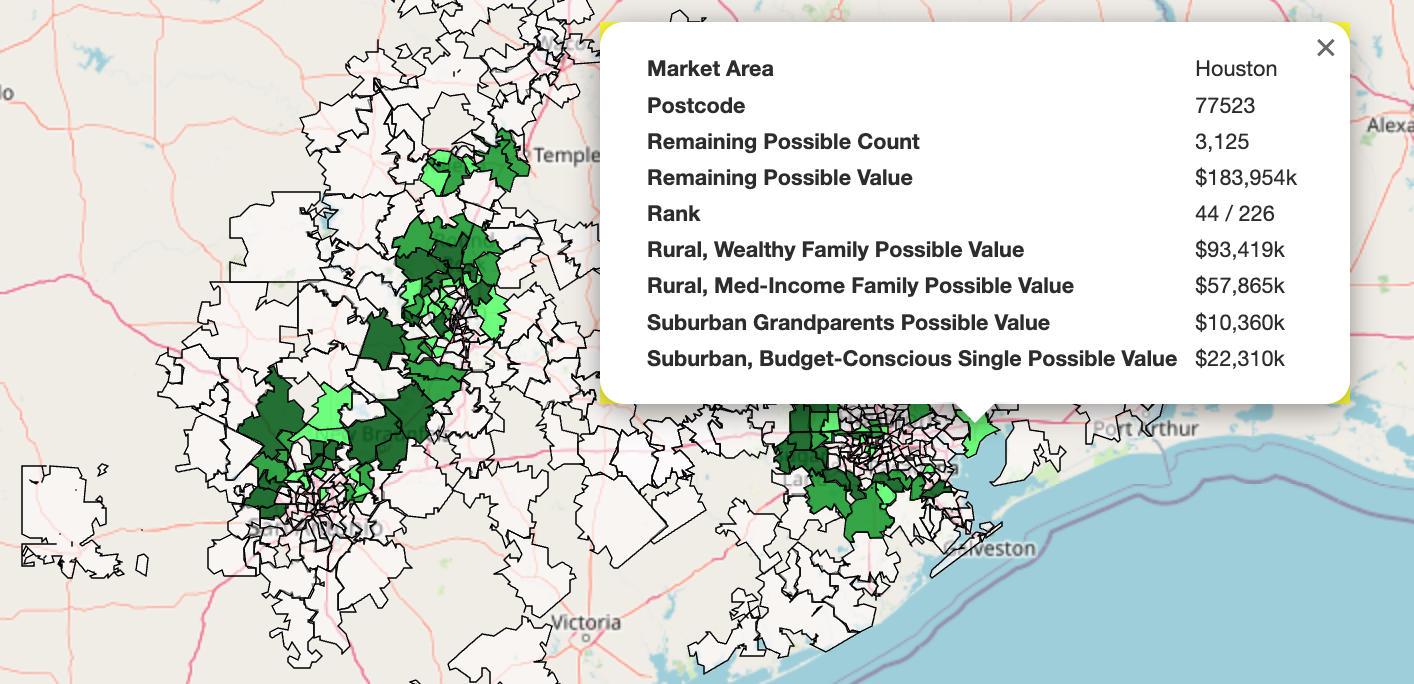How a leading solar provider improved customer targeting with personas and market opportunity analysis
Using Faraday's predictive tools, this company transformed their marketing strategy by targeting only the highest-potential customers.


The renewable energy sector is growing rapidly as consumers and businesses increasingly turn to sustainable solutions. While this growth presents a wealth of opportunities, it’s also been a bumpy ride, with market uncertainties and shifting dynamics creating challenges for providers. In this ever-changing landscape, success hinges on the ability to identify, prioritize, and place their bets on the right horse—or, in this case, the consumer segments with the most value-generating potential. When a prominent solar energy provider faced this challenge in 2024, they realized that finding the best answer alone wasn’t necessary, or the best use of their specialized team’s energy. Instead they turned to Faraday.
The problem: they were tired of guessing and wanted to make data-driven decisions they could feel confident in
This solar company faced a wide-ranging set of problems as they tried to grow their sales pipeline in 2024. Although they were determined to scale efficiently and outpace competitors, their existing targeting approach lacked precision, which led to wasted marketing spend in low-potential areas and with the wrong consumers. Additionally, they were overwhelmed by an abundance of raw data that made it difficult to derive actionable insights. Finally, rapid market growth had also attracted competitors, heightening the urgency for smarter acquisition strategies.
These challenges translated into tangible pain points like lower conversion rates, wasted time, and inefficient marketing spend. Without a clear roadmap to identify and prioritize high-potential customers, their ability to compete effectively in the fast-evolving solar market was under threat.
The solution: Faraday’s predictive analysis tools gave them data driven answer and confidence
Realizing these challenges could hinder their growth, the company decided to seek outside expertise and while these problems might seem insurmountable, they’re what we get up for.
Almost immediately after onboarding and hearing about their issues, we identified two significant ways we could support their expansion goals and help them to better understand their market: Persona Analysis and Market Opportunity Analysis.
Persona Analysis
Faraday’s Persona Analysis is a process that helps companies uncover the traits and behaviors most closely associated with their ideal customers. By analyzing first-party data from the client as well as rich third-party data from our proprietary Faraday Identity Graph (FIG- will link), we create detailed profiles of a company’s highest-value personas. These represent distinct socio-demographic groups that share common characteristics and behaviors, making it easier to design marketing strategies tailored to their specific needs.
For this solar provider, Persona Analysis revealed the unique traits that drive solar adoption. By understanding these factors, the company could refine its messaging, focus on the most relevant customer segments, and craft outreach strategies that resonated with their target audience.
But that on its own might not be enough. This tools allows us to know what type of person to target, but not necessarily how many of them exist and are reachable
Market Opportunity Analysis
That’s where Market Opportunity Analysis (MOA) comes in. Building on these insights and persona profiles, Faraday conducted a comprehensive Market Opportunity Analysis, a process which combines the client’s first-party data with broader market trends and dynamics to quantify their existing market. To conduct this analysis, Faraday builds a complex and individualized predictive model which compares that quantified market to the population at large, represented through Faraday’s Identity Graph—a robust and proprietary dataset containing detailed information on nearly every U.S. adult. This enables the identification of the totality of potential new customers who resemble the company’s top-performing personas available in the U.S. An example is pictured below.

The analysis doesn’t stop there though. It then visually maps these high-potential customers by state, zip code, and even down to the individual level. These dynamic predictions enable clients to focus on specific regions and neighborhoods with the highest concentration of ideal customers. These insights are paired with additional predictive tools, such as lead routing and direct mail targeting, ensuring marketing efforts can be directed with precision and confidence.
Through this dual approach, the solar provider gained actionable insights about market potential and customer behaviors. These findings informed advertising campaigns, local outreach initiatives, and third-party logistics strategies, enabling the company to allocate resources strategically and maximize their impact.
The results
The impact of Faraday’s Persona and Market Opportunity Analysis changed the company’s entire outlook. Where as before, they had marketed broadly based on vague demographic factors, they could now target their spend down to the top zipcodes, and even to the individuals most likely to convert, suggesting products that were more likely to sell and talking to their ideal consumer in a way that they were most likely to respond to.
A particularly telling example of the power of these tools came when the solar provider, who primarily relies on their installation trucks for marketing, discovered through Market Opportunity Analysis that some of the highest-potential zip codes were in rural areas—places where the trucks wouldn't typically reach. To ensure these high-fit prospects were engaged, they decided to run a targeted direct mail campaign in those regions, making sure they could be seen by the people who mattered most.
Faraday's tools didn’t just provide actionable data—they gave the solar provider the confidence to act without hesitation. In this case that meant switching up their marketing strategy significantly. By moving away from broad, guesswork-based targeting, they were able to focus their efforts and dollar specifically on high-potential customers and this makes all the difference.
Conclusion
Faraday's persona and market opportunity analysis provided clarity that allowed the company to make informed decisions on where to invest their resources, cutting out low-value areas and optimizing their target audience. With the right data guiding them, they gained the confidence to expand in competitive markets and scale efficiently. This success story underscores the value of data-driven insights in driving market expansion and delivering long-term success.
What's next for them? We're going to predict (with high confidence) more sales!

Ready for easy AI?
Skip the ML struggle and focus on your downstream application. We have built-in sample data so you can get started without sharing yours.